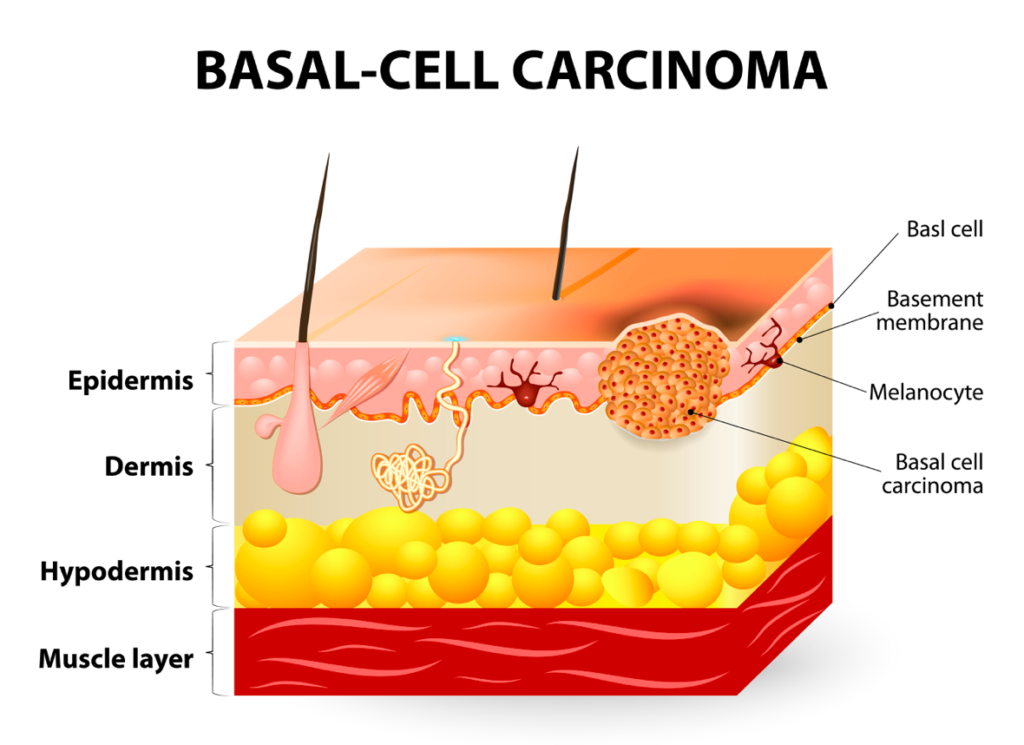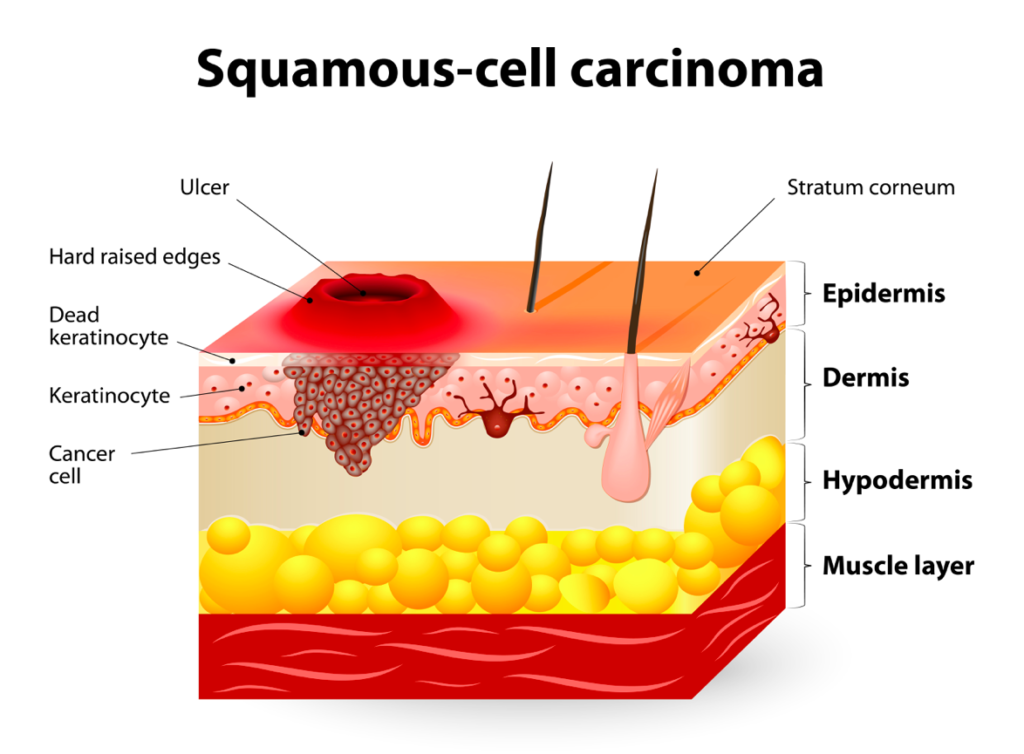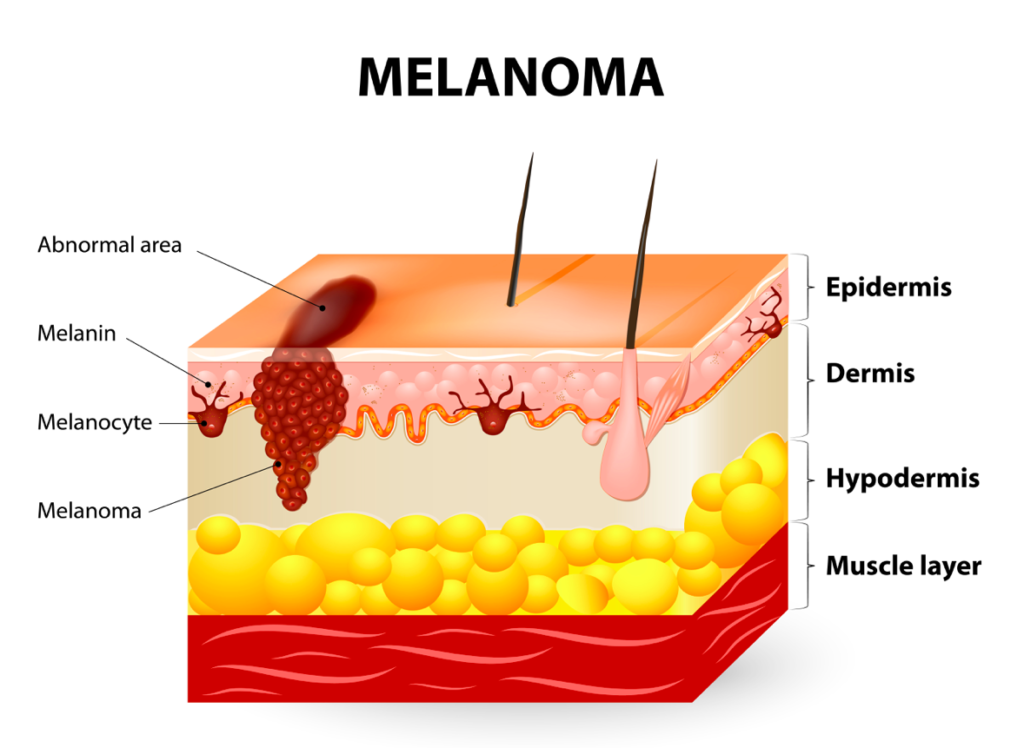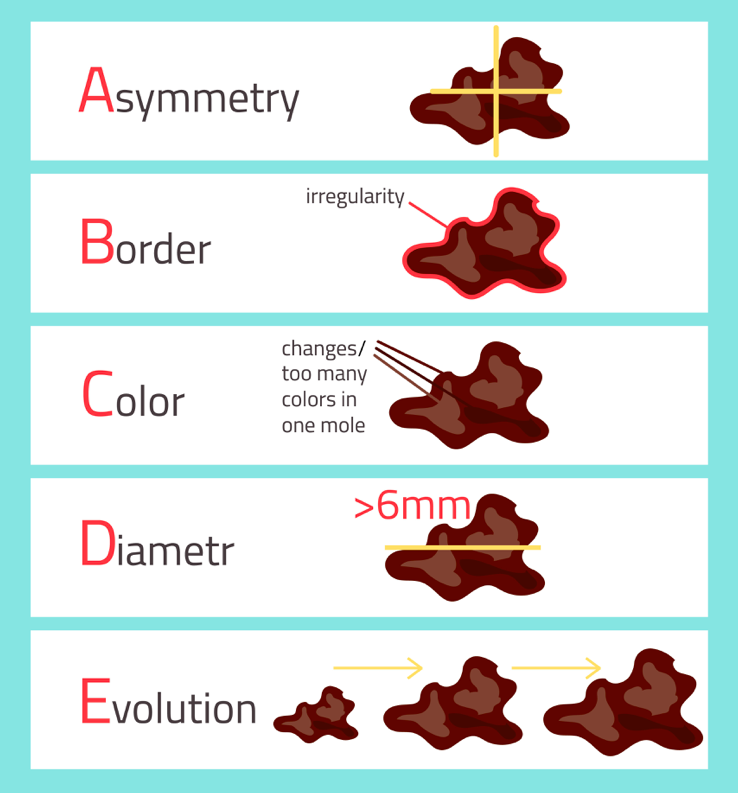
Skin Cancer

Skin Cancer Objectives
-
Describe what a tumor is and how cancer cells can spread.
-
Compare three different types of skin cancer.
-
List the warning signs used to detect skin cancer and explain why it is beneficial to have a medical professional make a diagnosis.
Cancer is a group of diseases in which cells have an increase in mitosis and a decrease in apoptosis.
You can select the closed captioning “cc” option if you would like to see the text.
In all cancers, cell undergo excessive mitosis, producing large numbers of cells. The cell type that originally mutated (changed genetically) impacts the type of cancer that develops.

Basal Cell Carcinoma

Squamous Cell Carcinoma

Malignant Melanoma

Any person’s skin cells can develop mutations that may lead to cancer. Check your skin at regular intervals and see a health care professional if wound does not heal or a skin feature appears unusual.
Cover Up
Regardless of the amount of melanin pigment in your epidermis, protect your skin.
Can’t get enough of the integumentary system? We have additional videos in this guide’s resource page.
This is the end of Guide 1B, the next step is to take the quiz on Canvas and upload your Safety Checklist Media Piece.

Check your knowledge. Can you:
-
describe what a tumor is and how cancer cells can spread?
-
compare three different types of skin cancer?
-
list the warning signs used to detect skin cancer and explain why it is beneficial to have a medical professional make a diagnosis?





